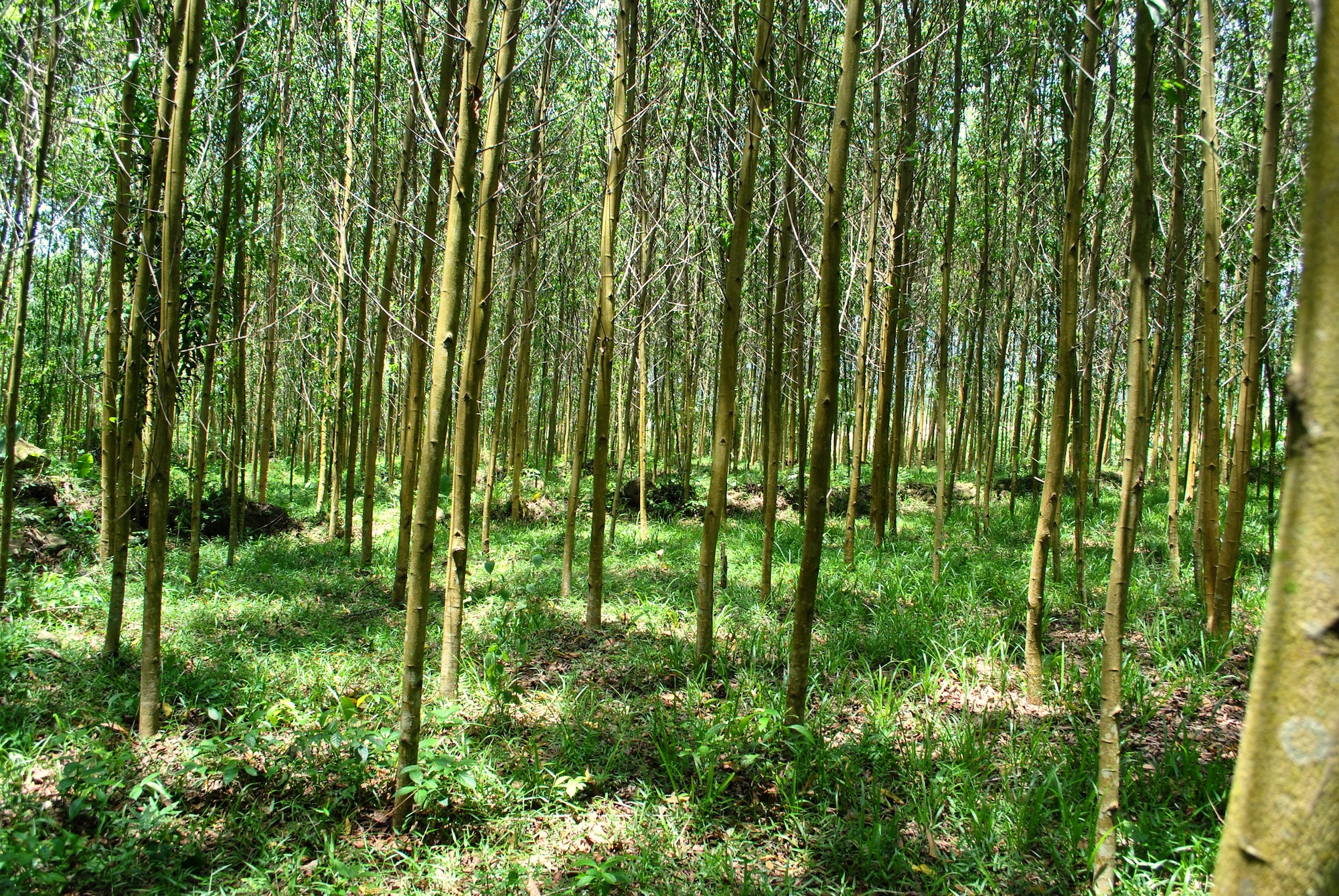
It’s a tiny blurb in my thick Lonely Planet, tucked away at the bottom of a page: “Built in 1819… stretching some 127 km through the hinterlands… reaching up to 4 meters in height… the wall was announced to the world in 2011.”
2011? How had no one noticed a 127 km wall for a century? Well, tourists had to be flocking there now.
“However, there are currently no organized tours to the wall and no trained guides to introduce its history. The best chance of visiting the Long Wall is to talk to experienced Easy Riders.”
A newly discovered wall in the Vietnamese hinterland, and the only way to get there is with whatever an “Easy Rider” is?
This would be the coolest story ever.
***
My fellow journalists are slightly less enthused. “You want to ride a bike when it’s 100 degrees to go see a wall?”
An “Easy Rider,” it turns out, is a freelancing guide who takes tourists around on a motorcycle.
“But it’s the most significant archaeological discovery in Southeast Asia!” I retort, “According to the BBC! Plus, there’s a real story here. I emailed the journalist who wrote about the wall for CNN, and he implied that the Communist government might be repressing minorities in the region, and so they don’t encourage foreigners to visit the Wall.”
“Wait, the government doesn’t want us to go there?”
Somehow the things I say to back up my argument aren’t actually working in my favor.
“I mean, I’m sure it’ll be fine. The only other thing is…” I pause, knowing what I’m about to say might further hurt my case, “No one I’ve asked in Hanoi seems to have heard of the Wall.” But I quickly brush this aside, “That’s probably just the language barrier.” I end the conversation, smiling confidently.
In hindsight, I should’ve known it wasn’t the language barrier.
Thankfully, all of the Easy Rider companies in Danang have heard of the Wall, and they offer AC cars in addition to motorcycles. One of the Easy Riders casually mentions that his parents live ten minutes from the Wall. Oh great! The CNN journalist had been rather fatalistic about options for interviewing locals—if we found residents through official sources, they’d say what the government wanted them to, and if we tried to find them through unofficial sources, well, we’d fail because they’d be too scared to talk to foreigners.
“Can we interview your parents?”
“Yes, yes! No problem!” This Easy Rider doesn’t seem concerned about the government, or anything else for that matter. The ride is set.
***
The day dawns, barely. It’s 7 AM. “We’re going to the Wall!” I cheer. My two companions, apart from our driver and guide, manage smiles. Nobody on the trip had been okay with my traveling alone, yet oddly enough, no one else seemed too excited about the Wall. The previous night, we had been on the verge of drawing lots, when finally two friends vol- unteered. “It’ll be amazing,” I say, reassuringly. They respond by falling asleep.
Six hours into what should’ve been a four-hour ride, the sign appears—green marble, ornate gold lettering spelling out “The Long Wall of Quang Ngai,” pointing off the main road down a dirt path lined by shops and houses. As our car trundles along, the houses get fewer and fewer, until we reach a dead-end, and get out. Fields surround us, and a jungle begins right in front of us. A low wall runs somewhat arbitrarily through a field to our right.
“That’s the Long Wall?!”
It’s about knee-high.
“No, no!” the guide gestures emphatically, signaling us to follow him into the forest. We breathe a sigh of relief. This is it.
***
It takes us a while to see the stones beneath the undergrowth. “Is this 4 meters?” I ask, remembering my Lonely Planet. No one else is on the metric system.
We’ve paused in front of one of the tallest sections of the Wall, except you wouldn’t realize there was anything beneath the overgrown shrubs, unless you were looking for it. The Wall winds all around us, ranging from waist-high to shoulder height, its grey stones piled so loosely on top of each other that it looks like a natural rock formation. This is how no one noticed it for a century! Anyone who came here wouldn’t have been able to guess this was man-made. Only after archaeologists discovered references to the Wall in manuscripts and consciously looked for it were they able to realize it was here all along.
Finally, the original mystery that arose on the plane has been answered. It feels, all in all, rather underwhelming.
***
Well, at least we still get to interview the family of the Easy Rider company’s owner about the local government’s repression of minorities. We follow our guide-cum-interpreter into his boss’ family’s house, a short car-ride away from the jungle. They aren’t well off, but their house is made of brick, and they have a TV in the living room. Once we’re done with about a half-hour of formalities, we start asking about the government.
“We’ve heard the government doesn’t treat the people well in this area?”
The grandmother in the house, who answers most of the questions, seems bewildered. She explains to the interpreter that she likes the government, and they’ve always been nice to everyone she knows.
“But, why aren’t they developing the wall? That could bring income to the people who live here, but the government just isn’t doing anything.”
“It’s far, and no one wants to come here!” She laughs. “Why would the government want to develop it?”
I press on. “But history matters! What relationship do you think people here should have with the Wall?”
One of her sons, middle-aged, chimes in with a sheepish grin. “We just go there and get drunk from time to time.”
Nitika Khaitan ‘16 is a Humanities major in Silliman College. Contact her at nitika. khaitan@yale.edu.
